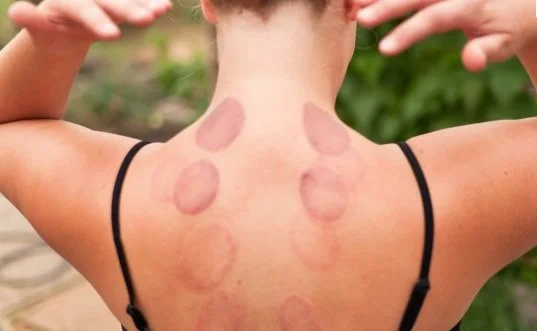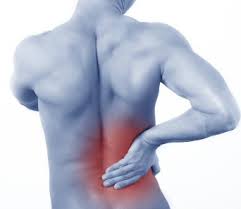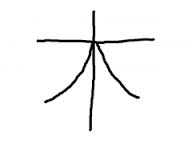Alcoholism dependence is a chronic relapsing disorder that constitutes the third leading cause of morbidity and mortality worldwide. Craving is one of the most important symptoms of alcohol dependence and is a predictor of relapse (Lee et al, 2015)
Acupuncture reduces alcohol cravings in alcoholics (Bullock et al, 2001). In a large randomized placebo controlled study of auricular acupuncture for alcohol dependence 49% of subjects reported acupuncture reduced their desire for alcohol. The results of a study (Bullock et al 1987) suggest that acupuncture may be able to interdict the cycle of alcoholic recidivism. Karst et al, (2002) studied ear and body acupuncture in the treatment of alcohol withdrawal symptoms. Analysis of the results using the Clinical Institute Withdrawal Assessment (CIWA-Ar-scale) data showed that patients assigned to acupuncture had a general tendency towards better outcome results and significantly fewer withdrawal symptoms on day 14. Other researchers note that acupuncture is both safe and effective for reducing cravings in alcohol dependent patients. They add that acupuncture is an inexpensive modality of care for the treatment of alcoholism and “produces significant results.”
Lee et al 2015 studied the effect of Zhubin (KI9) in reducing alcohol cravings in patients with alcohol dependence. This study breaks from other research on this topic. Prior research focused on National Acupuncture Detoxification Association (NADA) acupuncture point prescriptions for addiction. This typically involved use of auricular acupuncture points including Kidney, Sympathetic, Shenmen, Liver and Lung. However, this study used only one acupuncture point that is located on the lower leg. The researchers note of this acupuncture point, “Traditionally, it has been used as an acupoint for detoxification.” “The results showed that the acupuncture treated group had a significant craving reduction compared with the control group. Acupuncture treatment on Zhubin (KI9) was effective from the 1st week of treatment and its effect lasted through the 4 weeks.”
What’s the Point?
The acupuncture point investigated in the research is Zhubin (KI9) that is translated as “guest house.” It is located on the medial aspect of the lower leg and is 5 cun superior to KI3. It is approximately 1 cun posterior to the medial border of the tibia at the lower end of the gastrocnemius muscle. It is placed on a line drawn between KI3 and KI10.
KI9 is the Xi Cleft point of the Yinwei (Yin linking) vessel. This is the channel that connects the yin meridians of the hand and foot to the Conception channel. The Yinwei vessel may also be accessed by acupoint PC6, the confluent point of the Yinwei vessel. To achieve this, PC6 is often paired with SP4, its paired confluent point for the treatment of heart, chest and stomach disorders.
This study used only KI9, whose Yinwei vessel connection makes it especially suitable for the treatment of heart issues. In particular, this point benefits patients with heart shen (spirit) issues due to phlegm and phlegm-fire. This includes the treatment of mania, raving, bipolar disorder (manic depression) and other forms of severe mental illness. Here, there is a logical consistency with the application of KI9 for the treatment of alcohol cravings given alcoholism’s propensity for causing phlegm-fire in the heart.
Auricular Acupuncture Points
Kidney - (MA-SC)
Location: Superior Cymba Concha where is meets the wall of the inferior Crus of the antihelix
Functions: Supplement kidney and boost essence; strengthen
lumbus and invigorate bones.
Indications: Disorders of urinary and reproductive systems such
as nephritis, cystitis, impotence, seminal emission; dysmenor-
rhea, amenorrhea; deafness, tinnitus, retardation of hearing,
loss of hair; disorders of the nervous system such as poor
development of the brain, headache, spinal retrograde degenera-
tion, pain in lumbus, rheumatoid arthritis, chronic diarrhea,
frequent urination at night, bedwetting.
Sympathetic
Location: Hidden from view, at the junction of the Inferior Crus of the Antihelix and the Helix
Functions: Regulates functions of the sympathetic and parasympathetic nerves, relaxes spasm of the smooth muscle and relieves pain. Improves blood circulation and soothes irregular or rapid heartbeats.
Shenmen
Location: In the tip of the triangular fossa, but slightly superior
Functions: Calms mind. Connects with Spirit. Relieves spasm, pain, inflammation and itching. Reduces fever and coughs. Eases tension, anxiety and depression. Also helps insomnia, dreeam disturbed sleep and hypertension.
Liver - (MA-SC5)
Location: Posterior portion of the lower aspect of the superior
concha, anterior to Chest (MA-AH11) and superior to Spleen
(MA-IC).
Functions: Course the liver and rectify qû; brighten the eyes and
extinguish wind.
Indications: Acute or chronic hepatitis, cholecystitis, cholelithi-
asis, distention and pain in the upper abdomen, belching, acid
regurgitation; dizziness, convulsion, hemiparesis; myopia, sty,
and acute conjunctivitis.
Heart
Functions: For palpitations, strengthens heart.
References
Bullock, M. L., Umen, A. J., Culliton, P. D. and Olander,R.T. (1987) Acupuncture treatment of alcoholic recidivism: a pilot study. Alcoholism: Clinical and Experimental Research 11, 292–295
Bullock M. L., Kiresuk T. J., Sherman R. E., et al. A large randomized placebo controlled study of auricular acupuncture for alcohol dependence. Journal of Substance Abuse Treatment. 2002;22(2):71–77. doi: 10.1016/S0740-5472(01)00217-3. [PubMed] [Cross Ref]
Karst M, Passie T, Freidrich S, Wiese B, Schneider U. (2002) Acupuncture in the treatment of alcohol withdrawal symptoms: a randomized, placebo-controlled inpatient study. Addict Biol 2002 Oct;7(4):415-9.
Lee KM, Coehlo M, McGregor HA, Waltermire RS, Szumlinski KK (2015) Binge alcohol drinking elicits persistent negative affect in mice. Behav Brain Res 291:385–398. CrossRef Medline
















